
our family blog events life styles choices cooking crafts holidays
Jul 30, 2012
Jul 29, 2012
Pinata for Almost NOTHING!
Party Piñata
Step One: Inflate a 24-inch-wide balloon set it atop a large bucket so that the balloon’s narrow end rests just inside the bucket.
THIS IS A GREAT IDEA FOR ALL !AND CHEAP FAMILY FUN &TIMEPom-Pom Bees
Step One: Hot-glue a one-inch black pom-pom to a two- inch yellow pom-pom.
Step Two: Cut 2 two-inch-long pieces of black pipe cleaner, then wrap each around the yellow pom-pom, leaving about a half-inch between the pipe cleaners. Hot-glue ends in place. Finally, fold a piece of vellum paper in half and cut out a one-and-a-half-inch wing shape (as shown). Unfold and attach the creased center to the bee’s body, just above the stripe nearest to its head, with hot glue. Repeat to make additional bees, then hot-glue them onto the piñata. YOU CAN EASILY TURN THIS INTO A FOOTBALL, OR ANY OTHER PARTY FUN! |
Jul 25, 2012
GET YOUR HEAD............. IN THE HEAVENS
GREAT IDEA FOR MIDDLE LITTLES!
Make a Star Finder. Learn your way around the night sky by finding some of the constellations. Download and print the Star Finder for this month.
Color or decorate the Star Finder, if you like. Then cut it out on the solid lines.
Fold it like this:
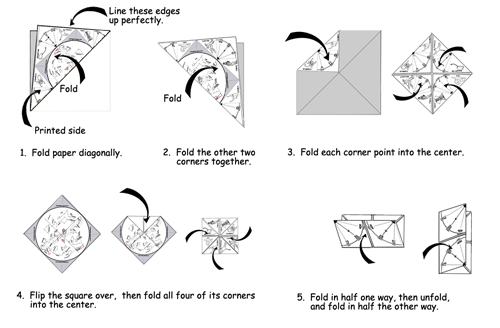
Play the Star Finder game:
-
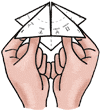 Stick your thumbs and first two fingers into the four pockets on the bottom of the Star Finder.
Stick your thumbs and first two fingers into the four pockets on the bottom of the Star Finder.
-
Ask another person to choose one of the top four
squares. Then, depending on the number on the square she chose, open
and close the Star Finder that many times (open up and down, close, open
side to side, close, etc.). For example, if she chose number 6, open
and close the Star Finder 6 times.

-
Then, ask the person to look inside the Star
Finder and pick one of the four visible constellations. This time, open
and close the Star Finder once for each letter to spell out his choice.
For example, if he chose "Lyra," you would open and close the Star
Finder 4 times, once for each letter: L - Y - R - A.
-
Ask the player again to pick one of the four
constellations visible. Open the panel to see the name of a
constellation (highlighted in red) she will try to find in the sky for
this month.
For some of the months, not every part of the Star Finder may show a highlighted constellation for you to find. In this case, just try to find the constellation that is nearest to the part of the sky you picked. Or, just find any constellation!
What ARE Constellations Anyway?
A constellation is group of stars like a dot-to-dot puzzle. If you join the dots—stars, that is—and use lots of imagination, the picture would look like an object, animal, or person. For example, Orion is a group of stars that the Greeks thought looked like a giant hunter with a sword attached to his belt.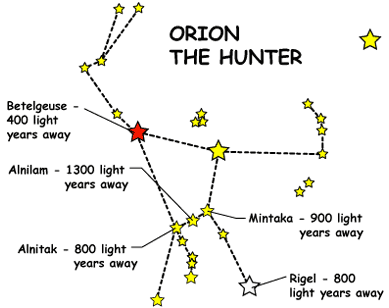
Other than making a pattern in Earth's sky, these stars may not be related at all. For example, Alnitak, the star at the left side of Orion's belt, is 817 light years away. (A light year is the distance light travels in one Earth year, almost 6 trillion miles!) Alnilam, the star in the middle of the belt, is 1340 light years away. And Mintaka at the right side of the belt is 916 light years away. Yet they all appear from Earth to have the same brightness.
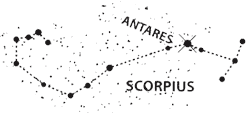 Even
the closest star is almost unimaginably far away. Because they are so
far away, the shapes and positions of the constellations in Earth's sky
change very, very slowly. During one human lifetime, they change hardly
at all. So, since humans first noticed the night sky they have
navigated by the stars. Sailors have steered their ships by the stars.
Even the Apollo astronauts going to the Moon had to know how to navigate
by the stars in case their navigation instruments failed.
Even
the closest star is almost unimaginably far away. Because they are so
far away, the shapes and positions of the constellations in Earth's sky
change very, very slowly. During one human lifetime, they change hardly
at all. So, since humans first noticed the night sky they have
navigated by the stars. Sailors have steered their ships by the stars.
Even the Apollo astronauts going to the Moon had to know how to navigate
by the stars in case their navigation instruments failed.
Finding the Constellations
We see different views of the Universe from where we live as Earth makes its yearly trip around the solar system. That is why we have a different Star Finder for each month, as different constellations come into view. Also, as Earth rotates on its axis toward the east throughout the hours of the night, the whole sky seems to shift toward the west.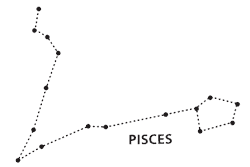 The
Star Finder charts are for a latitude of 34° N, which is about as far
north of the equator as Los Angeles, California. (Charts are from The Griffith Observer
magazine.) The farther north you are, the more the constellations will
be shifted south from the Star Finder charts. The Star Finder charts
show the sky at about 10 PM for the first of the month, 9 PM for the
middle of the month, and 8 PM for the last of the month. These are
local standard times. For months with Daylight Savings Time, star chart
times are an hour later.
The
Star Finder charts are for a latitude of 34° N, which is about as far
north of the equator as Los Angeles, California. (Charts are from The Griffith Observer
magazine.) The farther north you are, the more the constellations will
be shifted south from the Star Finder charts. The Star Finder charts
show the sky at about 10 PM for the first of the month, 9 PM for the
middle of the month, and 8 PM for the last of the month. These are
local standard times. For months with Daylight Savings Time, star chart
times are an hour later.
The star charts are maps of the sky overhead. So, to get the directions lined up, hold the map over your head and look up at it, and turn it so the northern horizon side is facing north.
If you live where big city lights drown out the beauty of the stars, you may see only a few of the brightest stars and planets. How sad! But see if you can find at least one or two constellations on a clear, Moonless night.

Some curious symbols ring the outside of the Star Finder. These symbols stand for some of the constellations in the zodiac. What is the zodiac and what is special about these constellations?
Imagine a straight line drawn from Earth through the Sun and out into space way beyond our solar system where the stars are. Then, picture Earth following its orbit around the Sun. This imaginary line would rotate, pointing to different stars throughout one complete trip around the Sun—or, one year. All the stars that lie close to the imaginary flat disk swept out by this imaginary line are said to be in the zodiac.
 The
constellations in the zodiac are simply the constellations that this
imaginary straight line points to in its year-long journey.
The
constellations in the zodiac are simply the constellations that this
imaginary straight line points to in its year-long journey.
In ancient times, astronomers did not fully understand how Earth, the Sun, and the stars moved. Nor did they have any idea the Universe is so vast. But they were keen observers of the sky and tried very hard to make sense of it.
People had already imagined that the constellations might be important symbols, telling stories of their gods and other myths. It was not a big step to suppose that the changing positions of the constellations at different times of the year might be important to people and events on Earth.
The Babylonians lived over 3,000 years ago. They divided the zodiac into 12 equal parts--like cutting a pizza into 12 equal slices. They picked 12 constellations in the zodiac, one for each of the 12 "slices." So, as Earth orbits the Sun, the Sun would appear to pass through each of the 12 parts of the zodiac. Since the Babylonians already had a 12-month calendar (based on the phases of the Moon), each month got a slice of the zodiac all to itself.
 But
even according to the Babylonians' own ancient stories, there were 13
constellations in the zodiac. (Other cultures and traditions have
recognized as many as 24 constellations in the zodiac.) So the
Babylonians picked one, Ophiuchus, to leave out. Even then, some of the
chosen 12 didn't fit neatly into their assigned slice of the pie and
slopped over into the next one.
But
even according to the Babylonians' own ancient stories, there were 13
constellations in the zodiac. (Other cultures and traditions have
recognized as many as 24 constellations in the zodiac.) So the
Babylonians picked one, Ophiuchus, to leave out. Even then, some of the
chosen 12 didn't fit neatly into their assigned slice of the pie and
slopped over into the next one.
 When the Babylonians first invented the 12 signs of
zodiac, a birthday between about July 23 and August 22 meant being born
under the constellation Leo. Now, 3,000 years later, the sky has
shifted because Earth's axis (North Pole) doesn't point in quite the
same direction.
When the Babylonians first invented the 12 signs of
zodiac, a birthday between about July 23 and August 22 meant being born
under the constellation Leo. Now, 3,000 years later, the sky has
shifted because Earth's axis (North Pole) doesn't point in quite the
same direction.
Now Mimi's August 4 birthday would mean she was born "under the sign" of Cancer (one constellation "earlier"), not Leo.
The constellations are different sizes and shapes, so the Sun spends different lengths of time lined up with each one. The line from Earth through the Sun points to Virgo for 45 days, but it points to Scorpius for only 7 days. To make a tidy match with their 12-month calendar, the Babylonians ignored the fact that the Sun actually moves through 13 constellations, not 12. Then they assigned each of those 12 constellations equal amounts of time. Besides the 12 familiar constellations of the zodiac, the Sun is also aligned with Ophiuchus for about 18 days each year.
If you want to find out what your "sign" really is (not that it matters!), here are all 13 traditional constellations in the zodiac and the dates the Sun "passes through" them.
THANK YOU NSA
http://spaceplace.nasa.gov/starfinder2/
Jul 22, 2012
Another................... PRACTICALLY FREE BOREDOM BUSTER
HEX NUT BRACELET
You’ll need:
- 3 strands of cotton butcher’s twine cut into one yard pieces
- 18 small brass hex nuts
- a bit of dexterity!
Gather the 3
strands of twine and tie a knot at the top, leaving about 2 inches of
slack. Start braiding. At about an inch of the way down, you’ll begin
braiding in the nuts. Before you braid the far left strand over the
middle strand, thread on a nut, push it against the base of the braid,
and crossover. Depending on the thickness of the twine, you can wrap
tape around the bottom tips to prevent the twine from fraying.
Keep your thumb at the base of the braid,
holding the nut in its place. Before you braid the far right strand over
the middle, thread on another nut, push it against the base of the
braid and crossover. Again, hold your thumb tightly against the base of
the braid, keeping the nuts in place. Thread another nut onto the far
left piece and crossover.
Repeat the steps, by threading the rest of
the nuts to the outer pieces of twine before they are crossed over.
Thread, cross, thread, cross. Finish the bracelet with another inch of
braided twine and a knot.
The bracelet should wrap around your wrist at least two or three times. Trim it to your liking

Good Luck

CREDIT http://www.gilesandbrother.com/search?q=hex
GREAT SITE WITH MORE IDEAS
and ANOTHER PRACTICALLY FREE.................
BOOKSHELVES
This Book Shelf made from those Pallets you see everywhere!
you could whitewash them
REALLY COULD YOU DO ANY BETTER THAN RECYCLING ?

Jul 20, 2012
Summer Fun at Millerton Lake
so off to the lake
 |
| Friant Dam |
 |
| Millerton Lake |
The Day was Cool (87}
and we brought 3 Cars and a Motorcycle
just to bring the Food!
 | |||||
| we had it to ourselves (almost) |
 | |||||||
| The water was low |
 | ||
| Tiffany and josh hogging all the food |
 |
| Kayla and Elexis learning to hold their breath |
 |
| Please Uncle Dave are the burgers done yet |
 |
| just wait til you see him eat then... |
 |
| Totally awed by My Blogging |
 |
| pondering a blind date his cousin Josh set up for him |
 |
| too much Sun |
and they all slept great!
Jul 14, 2012
Can You Say Penny....less?
Remember the Whirlybird..............
What You will need:
Paper
Scissors
Paperclip (optional)
1. Print out this template at the bottom of the page, on to an A4 sheet of paper.
2. Cut along the solid grey lines.
3. Fold flap A forward and flap B back
4. Fold lines C & D upwards – this adds weight to the base of the tail
5. Fold flaps E & F inwards along dotted lines
6. Hold the whirlybird by the tail, high above your head and let go.
7. If you change the length of the wings you can make the whirlybird go faster or slower. You can also add a
paper clip to the tail to give it more weight.
Scrapbook Paper works well adding Individuality to your Whirlybirds!
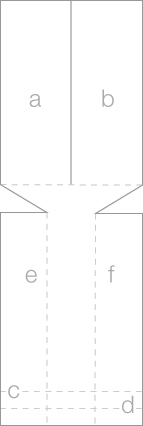
Subscribe to:
Comments (Atom)








